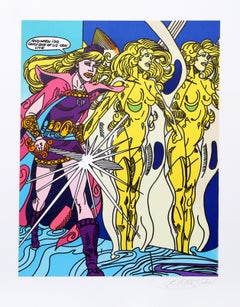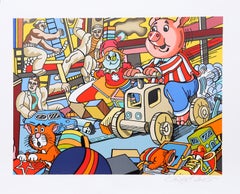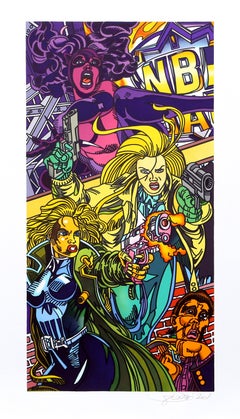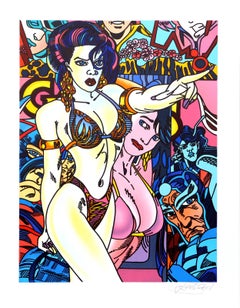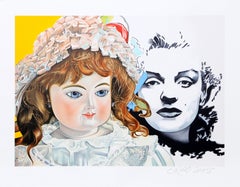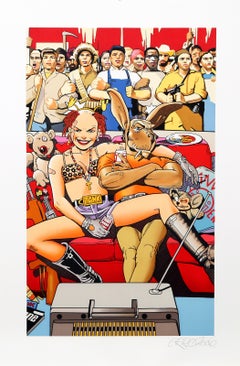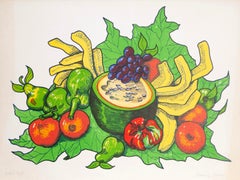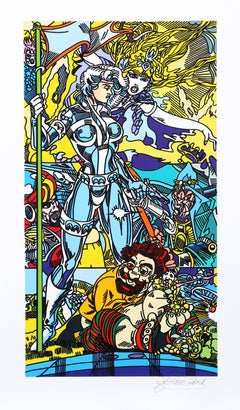Pop Art Lithograph
Early 2000s Pop Art Figurative Prints
Lithograph
Early 2000s Pop Art Figurative Prints
Lithograph
Early 2000s Pop Art Figurative Prints
Lithograph
Early 2000s Pop Art Figurative Prints
Lithograph
Early 2000s Pop Art Figurative Prints
Lithograph
Early 2000s Pop Art Figurative Prints
Lithograph
Early 2000s Pop Art Figurative Prints
Lithograph
1970s Pop Art Prints and Multiples
Lithograph
Early 2000s Pop Art Figurative Prints
Lithograph
1960s Pop Art Portrait Prints
Lithograph
1990s Pop Art Figurative Prints
Lithograph
1980s Pop Art Figurative Prints
Lithograph
1960s Pop Art Portrait Prints
Lithograph
Early 2000s Pop Art Figurative Prints
Lithograph
Early 2000s Pop Art Figurative Prints
Lithograph
Early 2000s Pop Art Figurative Prints
Lithograph
Early 2000s Pop Art Figurative Prints
Lithograph
1980s Pop Art Figurative Prints
Lithograph
21st Century and Contemporary Pop Art Figurative Prints
Lithograph
1980s Pop Art Nude Prints
Lithograph
1990s Pop Art Nude Prints
Lithograph
1960s Pop Art Interior Prints
Lithograph
1970s Pop Art Prints and Multiples
Lithograph
1970s Pop Art Prints and Multiples
Lithograph
1970s Pop Art Interior Prints
Lithograph
1970s Pop Art Landscape Prints
Lithograph
1980s Pop Art Figurative Prints
Lithograph
1980s Pop Art Figurative Prints
Lithograph
1980s Pop Art Figurative Prints
Lithograph
1980s Pop Art Abstract Prints
Lithograph
1980s American Impressionist Figurative Prints
Lithograph
1980s 85 New Wave Portrait Prints
Lithograph
1980s 85 New Wave Portrait Prints
Lithograph
1980s 85 New Wave Portrait Prints
Lithograph
1980s 85 New Wave Portrait Prints
Lithograph
1970s Pop Art Abstract Prints
Lithograph
1970s Pop Art Portrait Prints
Lithograph
1960s Pop Art Portrait Prints
Lithograph
1970s Pop Art Figurative Prints
Lithograph
1970s Pop Art Landscape Prints
Lithograph
1970s Pop Art Landscape Prints
Lithograph
1980s Pop Art Landscape Prints
Lithograph
1980s Pop Art Landscape Prints
Lithograph
1980s Pop Art Landscape Prints
Lithograph
1970s Pop Art Landscape Prints
Lithograph
1980s Pop Art Landscape Prints
Lithograph
2010s Pop Art Nude Prints
Lithograph
1970s Pop Art Portrait Prints
Lithograph
1980s Pop Art Figurative Prints
Lithograph
1990s Pop Art Figurative Prints
Lithograph
1980s Pop Art Figurative Prints
Lithograph
1980s Pop Art Figurative Prints
Lithograph
1970s Pop Art Figurative Prints
Lithograph
21st Century and Contemporary Pop Art Portrait Prints
Lithograph
Early 2000s Pop Art Figurative Prints
Lithograph
21st Century and Contemporary Pop Art Nude Prints
Lithograph
1970s Pop Art Figurative Prints
Lithograph
- 1
- ...
Pop Art Lithograph For Sale on 1stDibs
How Much is a Pop Art Lithograph?
A Close Look at Pop Art Art
Perhaps one of the most influential contemporary art movements, Pop art emerged in the 1950s. In stark contrast to traditional artistic practice, its practitioners drew on imagery from popular culture — comic books, advertising, product packaging and other commercial media — to create original Pop art paintings, prints and sculptures that celebrated ordinary life in the most literal way.
ORIGINS OF POP ART
- Started in Britain in the 1950s, flourished in 1960s-era America
- “This is Tomorrow,” at London's Whitechapel Gallery in 1956, was reportedly the first Pop art exhibition
- A reaction to postwar mass consumerism
- Transitioning away from Abstract Expressionism
- Informed by neo-Dada and artists such as Jasper Johns and Robert Rauschenberg; influenced postmodernism and Photorealism
CHARACTERISTICS OF POP ART
- Bold imagery
- Bright, vivid colors
- Straightforward concepts
- Engagement with popular culture
- Incorporation of everyday objects from advertisements, cartoons, comic books and other popular mass media
POP ARTISTS TO KNOW
- Richard Hamilton
- Andy Warhol
- Marta Minujín
- Claes Oldenburg
- Eduardo Paolozzi
- Rosalyn Drexler
- James Rosenquist
- Peter Blake
- Roy Lichtenstein
ORIGINAL POP ART ON 1STDIBS
The Pop art movement started in the United Kingdom as a reaction, both positive and critical, to the period’s consumerism. Its goal was to put popular culture on the same level as so-called high culture.
Richard Hamilton’s 1956 collage Just what is it that makes today’s homes so different, so appealing? is widely believed to have kickstarted this unconventional new style.
Pop art works are distinguished by their bold imagery, bright colors and seemingly commonplace subject matter. Practitioners sought to challenge the status quo, breaking with the perceived elitism of the previously dominant Abstract Expressionism and making statements about current events. Other key characteristics of Pop art include appropriation of imagery and techniques from popular and commercial culture; use of different media and formats; repetition in imagery and iconography; incorporation of mundane objects from advertisements, cartoons and other popular media; hard edges; and ironic and witty treatment of subject matter.
Although British artists launched the movement, they were soon overshadowed by their American counterparts. Pop art is perhaps most closely identified with American Pop artist Andy Warhol, whose clever appropriation of motifs and images helped to transform the artistic style into a lifestyle. Most of the best-known American artists associated with Pop art started in commercial art (Warhol made whimsical drawings as a hobby during his early years as a commercial illustrator), a background that helped them in merging high and popular culture.
Roy Lichtenstein was another prominent Pop artist that was active in the United States. Much like Warhol, Lichtenstein drew his subjects from print media, particularly comic strips, producing paintings and sculptures characterized by primary colors, bold outlines and halftone dots, elements appropriated from commercial printing. Recontextualizing a lowbrow image by importing it into a fine-art context was a trademark of his style. Neo-Pop artists like Jeff Koons and Takashi Murakami further blurred the line between art and popular culture.
Pop art rose to prominence largely through the work of a handful of men creating works that were unemotional and distanced — in other words, stereotypically masculine. However, there were many important female Pop artists, such as Rosalyn Drexler, whose significant contributions to the movement are recognized today. Best known for her work as a playwright and novelist, Drexler also created paintings and collages embodying Pop art themes and stylistic features.
Read more about the history of Pop art and the style’s famous artists, and browse the collection of original Pop art paintings, prints, photography and other works for sale on 1stDibs.
Finding the Right Prints And Multiples for You
Decorating with fine art prints — whether they’re figurative prints, abstract prints or another variety — has always been a practical way of bringing a space to life as well as bringing works by an artist you love into your home.
Pursued in the 1960s and ’70s, largely by Pop artists drawn to its associations with mass production, advertising, packaging and seriality, as well as those challenging the primacy of the Abstract Expressionist brushstroke, printmaking was embraced in the 1980s by painters and conceptual artists ranging from David Salle and Elizabeth Murray to Adrian Piper and Sherrie Levine.
Printmaking is the transfer of an image from one surface to another. An artist takes a material like stone, metal, wood or wax, carves, incises, draws or otherwise marks it with an image, inks or paints it and then transfers the image to a piece of paper or other material.
Fine art prints are frequently confused with their more commercial counterparts. After all, our closest connection to the printed image is through mass-produced newspapers, magazines and books, and many people don’t realize that even though prints are editions, they start with an original image created by an artist with the intent of reproducing it in a small batch. Fine art prints are created in strictly limited editions — 20 or 30 or maybe 50 — and are always based on an image created specifically to be made into an edition.
Many people think of revered Dutch artist Rembrandt as a painter but may not know that he was a printmaker as well. His prints have been preserved in time along with the work of other celebrated printmakers such as Pablo Picasso, Salvador Dalí and Andy Warhol. These fine art prints are still highly sought after by collectors.
“It’s another tool in the artist’s toolbox, just like painting or sculpture or anything else that an artist uses in the service of mark making or expressing him- or herself,” says International Fine Print Dealers Association (IFPDA) vice president Betsy Senior, of New York’s Betsy Senior Fine Art, Inc.
Because artist’s editions tend to be more affordable and available than his or her unique works, they’re more accessible and can be a great opportunity to bring a variety of colors, textures and shapes into a space.
For tight corners, select small fine art prints as opposed to the oversized bold piece you’ll hang as a focal point in the dining area. But be careful not to choose something that is too big for your space. And feel free to lean into it if need be — not every work needs picture-hanging hooks. Leaning a larger fine art print against the wall behind a bookcase can add a stylish installation-type dynamic to your living room. (Read more about how to arrange wall art here.)
Find fine art prints for sale on 1stDibs today.
- What is Pop art?1 Answer1stDibs ExpertSeptember 25, 2019
Pop art is a movement, started in the 1950s, that uses imagery from popular culture.
- Who is the father of Pop art?1 Answer1stDibs ExpertApril 16, 2024Opinions vary on who the father of Pop art may be. Pop art emerged in the 1950s in Britain and flourished in 1960s-era America as a reaction to postwar mass consumerism. Some argue that Andy Warhol deserves the title because he helped shape the movement during the 1960s. However, other artists like Eduardo Paolozzi and Richard Hamilton began producing what’s now considered Pop art a decade earlier. Other artists who made important contributions to Pop art include Marta Minujín, Claes Oldenburg, Rosalyn Drexler, James Rosenquist, Peter Blake and Roy Lichtenstein. On 1stDibs, shop a selection of Pop Art.
- Why did Pop art start?1 Answer1stDibs ExpertFebruary 13, 2024Pop art started because artists sought to react to the mass consumerism of the 1950s with the goal of putting popular culture on the same level as so-called high culture. Works associated with Pop art are distinguished by their bold imagery, bright colors and seemingly commonplace subject matter. Practitioners endeavored to challenge the status quo. Pop artists broke with the perceived elitism of the previously dominant Abstract Expressionism and made pointed statements about current events. Richard Hamilton's 1956 collage ‘Just what is it that makes today’s homes so different, so appealing?’ is widely believed to have kickstarted this unconventional new style, but Pop art is perhaps most closely identified with American Pop artists Andy Warhol and Roy Lichtenstein. On 1stDibs, explore a collection of Pop art.
- What does pop art mean?2 Answers1stDibs ExpertFebruary 22, 2021Pop art refers to a movement that emerged during the mid- to late-1950s. It is art based on popular culture and mass media and works to critique traditional fine art values. Find many different works under the Pop art category on 1stDibs.Irena Orlov ArtMarch 1, 2021It emerged in 1950 in United States and England. It is characterized by using images as objects of popular culture or everyday life, obtained from the media. Through irony, it reflected the society of the time, marked by consumerism, materialism, the cult of image and fashion.
- Who was the founder of Pop art?1 Answer1stDibs ExpertAugust 15, 2024There was no single founder of Pop art, as many artists contributed to the development of the movement. Richard Hamilton’s 1956 collage Just what is it that makes today’s homes so different, so appealing? is widely believed to have kickstarted the unconventional new style. Although Hamilton and other British artists launched the movement, they were soon overshadowed by their American counterparts.
Pop art is perhaps most closely identified with American artist Andy Warhol, whose clever appropriation of motifs and images helped to transform the artistic style into a lifestyle. Roy Lichtenstein was another prominent American Pop artist. Much like Warhol, Lichtenstein drew his subjects from print media, particularly comic strips, producing paintings and sculptures characterized by primary colors, bold outlines and halftone dots, elements appropriated from commercial printing. On 1stDibs, shop a range of Pop art. - What is British Pop art?1 Answer1stDibs ExpertMay 14, 2024British Pop art is a style of art that emerged in the United Kingdom during the 1950s. British artist Richard Hamilton's 1956 collage Just what is it that makes today's homes so different, so appealing? is widely believed to have kickstarted this unconventional new style, which reacted to the period's consumerism. Its goal was to put popular culture on the same level as so-called high culture. Although British artists launched the Pop art movement, they were soon overshadowed by their American counterparts. Pop art is perhaps most closely identified with American Pop artist Andy Warhol, whose clever appropriation of motifs and images helped to transform the artistic style into a lifestyle. On 1stDibs, shop a wide range of Pop art.
- What influenced Pop Art?1 Answer1stDibs ExpertSeptember 25, 2019
Pop art was influenced by advertising and other forms of mass marketing
- Is Pop Art postmodern?1 Answer1stDibs ExpertSeptember 25, 2019
Yes, Pop art is considered postmodern.
- Why is it called Pop art?1 Answer1stDibs ExpertNovember 26, 2024The reason why it is called Pop art is that artists who participated in the movement drew inspiration from popular, or "pop," culture. One of the most influential contemporary art movements, Pop art emerged in the 1950s. Its practitioners sought to challenge the status quo, breaking with the perceived elitism of the previously dominant Abstract Expressionism and making statements about current events. They drew on imagery from popular culture — comic books, advertising, product packaging and other commercial media — to create original Pop art paintings, prints and sculptures that celebrated ordinary life in the most literal way. Pop art works are distinguished by their bold imagery, bright colors and seemingly commonplace subject matter. On 1stDibs, shop a wide variety of Pop art.
- 1stDibs ExpertApril 22, 2024Opinions vary as to what the most famous piece of Pop art is. Two major contenders for the title are Andy Warhol's 1961–62 series Campbell's Soup Cans and Roy Lichtenstein's 1963 diptych painting Whaam!. Other notable Pop art works include A Bigger Splash by David Hockney, Flag by Jasper Johns, Crying Girl by Roy Lichtenstein, Radiant Baby by Keith Haring, the Marilyn Triptych by Andy Warhol, and Spoonbridge and Cherry by Claes Oldenburg. On 1stDibs, find a wide range of Pop art.
- 1stDibs ExpertMay 3, 2024Who is considered the father of Pop art is open for debate. Some experts give the title to Andy Warhol, whose clever appropriation of motifs and images helped to transform the artistic style into a lifestyle. Others may argue that Roy Lichtenstein deserves the credit, as his work drawing from print media helped to define the style. Another potential candidate is Richard Hamilton, whose 1956 collage Just what is it that makes today's homes so different, so appealing? is widely believed to have kickstarted the Pop art movement. Shop a diverse assortment of Pop art on 1stDibs.
- 1stDibs ExpertSeptember 25, 2019Artists in the United Kingdom started the Pop art movement as a reaction, both positive and critical, to the period's consumerism. Its goal was to put popular culture on the same level as so-called high culture. London-born artist Richard Hamilton is widely believed to have had a pioneering role in Pop art, which drew on imagery from popular culture - comic books, advertising, product packaging and other commercial media - to create paintings and sculptures that celebrated ordinary life in the most literal way. Although British artists launched the movement, they were soon overshadowed by their American counterparts. Andy Warhol, Roy Lichtenstein and Rosalyn Drexler are some of the American artists associated with the history of Pop art. Find original Pop art on 1stDibs.
- 1stDibs ExpertSeptember 25, 2019
Andy Warhol is one of the most famous Pop artists.
- 1stDibs ExpertFebruary 13, 2023The bright colors and graphic patterns and imagery of Pop art continue to influence fashion, prompting the industry’s designers to integrate provocative color pairings and visuals commonly associated with mass media and advertising into their garments. You can see examples of this in iconic pieces by Pierre Cardin, Mary Quant and Vivienne Westwood as well as in the work of many contemporary designers. Specifically, the well-known portraits that Andy Warhol created of celebrities and pop culture figures made their way into fashion by designers who incorporated images of popular celebrities into their clothing designs.
- 1stDibs ExpertApril 5, 2022No, a lithograph isn’t technically an original work of art. It’s a type of print, but a lithograph is generally more prized than a common print because each lithograph is hand-made by the artist through the process of lithography. They’re usually made in much lower quantities than prints, which are easier to produce on a large scale. On 1stDibs, shop a large collection of lithographs from various artists.
- 1stDibs ExpertMarch 22, 2022Roy Lichtenstein painted Pop art to comment on geopolitical and social issues of his time. He patterned his work off of mass media like advertising and comic books to help convey his messages. On 1stDibs, shop a range of Roy Lichtenstein art.
- 1stDibs ExpertMarch 22, 2022Roy Lichtenstein started producing Pop art in the 1950s. His work drew inspiration from advertisements and comic books. In the 1960s, his work became widely known, and today, historians credit him with greatly influencing the Pop art movement. On 1stDibs, find a collection of Roy Lichtenstein art.
- Is Alex Katz's style Pop art?1 Answer1stDibs ExpertMay 3, 2024Yes, Alex Katz's style is Pop art. During the 1950s, he experimented with collage and painting on aluminum sheets, with his later work in the 1960s drawing inspiration from film and advertising. In the 1970s, Katz expanded into portrait groups that regularly depicted the cultural scene of New York. In the 1980s, he extended his focus to fashion and its supermodels. These sources of inspiration align with Pop art's focus on transforming elements of popular culture into fine art. On 1stDibs, shop a collection of Alex Katz art.
Read More
10 Reasons Art Collectors Are Obsessed with Andy Warhol
More than three decades after his death, the prolific Pop artist and cultural icon's body of work continues to captivate. Here's a primer of some of his most notable motifs and mediums.
Exploring Our Current Obsession with Sixties Style
A new exhibition in Philadelphia stars a complex decade that continues to inspire.
